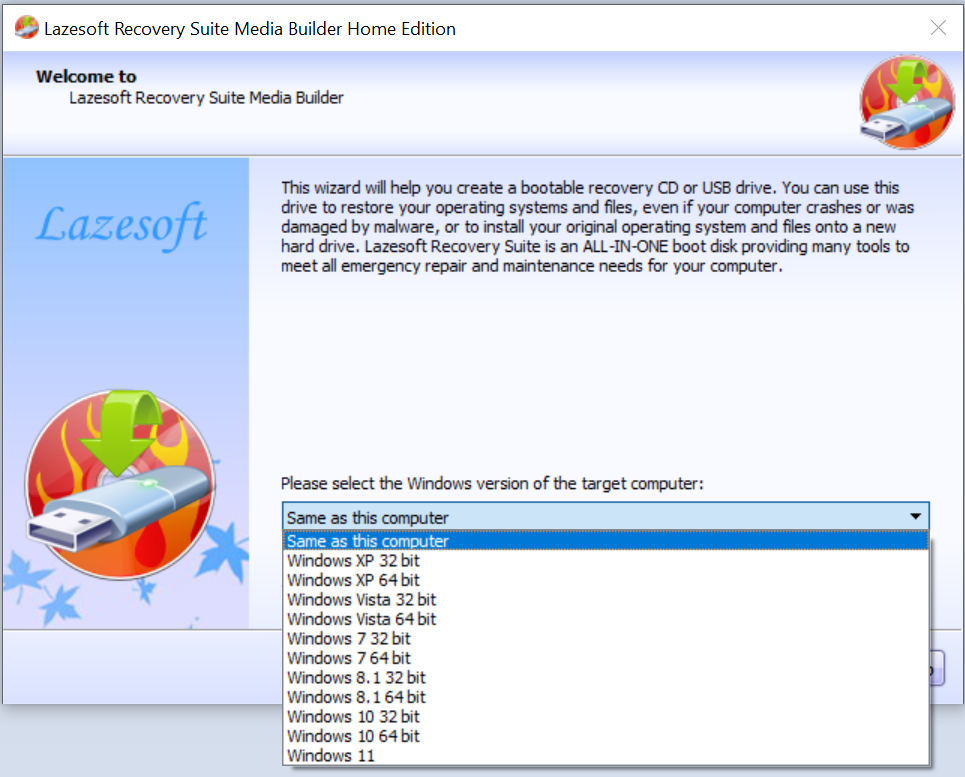

- #Create recovery image windows 10 on usb how to#
- #Create recovery image windows 10 on usb Patch#
- #Create recovery image windows 10 on usb upgrade#
- #Create recovery image windows 10 on usb Pc#
- #Create recovery image windows 10 on usb iso#
#Create recovery image windows 10 on usb upgrade#
The licensing aspects of installing VL media on your customers end device can be found here: Microsoft Customer License Verification for Upgrade Installation Services for Microsoft Windows Operating System Software by Third Parties form In the Diskpart utility, type active, and then type exit. In the Diskpart utility, type select volume F (replace F with your USB stick drive letter). In our example, the USB stick had the drive letter F. In the Diskpart utility, you can type list volume (or the shorter list vol) to list the volumes, but you really only need to remember the drive letter of the USB stick to which you copied the content. Start an elevated command prompt (run as Administrator), and start the Diskpart utility by typing Diskpart and pressing Enter.

On a physical machine running Windows 7 or later, insert the USB stick you want to use.Ĭopy the content of the MDTOfflineMedia\Content folder to the root of the USB stick. (A dual-layer DVD is limited to 8.5 GB.) Follow these steps to create a bootable USB stick from the offline media content:
#Create recovery image windows 10 on usb iso#
The ISO that you got when updating the offline media item can be burned to a DVD and used directly (it will be bootable), but it is often more efficient to use USB sticks instead since they are faster and can hold more data. If someone could share an article that worked for them or point me to the right direction I would really appreciate it, the task is chasing me non-stop and I just don't want to give up, but I need some great and fresh minds on this. To be exact, it is a Windows 10 (1607) Enterprise edition. We have a WDS server on which the image is stored and it deploys perfectly fine through PXE. So I thought I will come here for some help and ask the experts, I wish someone could just simply tell me that with Windows 10, specially Enterprise editions - SCCM is the only solution for such a handy USB? I've been trying 3rd Party suppliers as well, but I am at the end of the day - if they can do it, then I should be able to do it as well? Plus, 3rd Party is not really an option because I can run into licensing problems later on, and on the other hand - it didn't really work anyways so it doesn't matter. Downloading an ISO, extracting all the contents, replacing the "install.wim" files and then compressing everything into an ISO again and installing it with Rufus. Creating a WinPE USB and using Imagex & DISM. Now I've been trying all kinds of methods
#Create recovery image windows 10 on usb Patch#
I was requested to create a bootable Windows 10 (Enterprise) USB with a custom image, the plan exactly is to store the image on our WDS server and patch it every couple of months, but at the same time, the customer wants to have the same kind of image in a USB format so they could image PC's / Laptops themselves. Select your newly created bootable USB drive and press Enter.The time is here when for the first time I am in need to Ask a question and hopefully get an answer or at least a point to the right direction.
#Create recovery image windows 10 on usb Pc#

#Create recovery image windows 10 on usb how to#
How to Boot Your Computer From a Bootable Windows 10 USB Drive Your Windows 10 bootable USB drive is now ready.



 0 kommentar(er)
0 kommentar(er)
